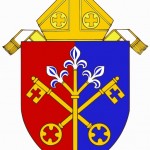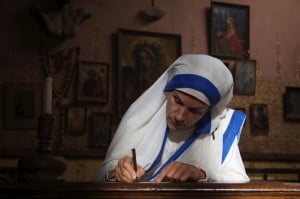If you die on Malta, if a proposed alternate corpse disposal system is approved,
- your soft tissues could be melted down into a thick, syrupy paste, then
- along with standard waste, it could be dumped into the sewer system or
- used to fertilize crops,
- Your bones could be ground up, then
- returned to your family, like ashes, to be scattered.
The island of Malta is pretty small–only about 95 square miles. And it’s pretty crowded, with more than 450,000 residents. So getting rid of dead people is kinda problematic. Currently, more than 90 percent of Malta’s deceased are buried in cemeteries; but will they run out of room?
Cemetery crowding is a problem for Malta’s inhabitants right now, but I can imagine a future in which Americans, too, ask how to dispose of the remains of their loved ones.
* * * * *
One solution which has been proposed to allay overcrowding of Malta’s cemeteries is alkaline hydrolysis, also known as resomation. According to the Times of Malta:
Known as alkaline hydrolysis, the funeral alternative would see the introduction of large metal baths which, using a mixture of warm water and potassium hydroxide, turn body tissue into“thick coffee syrup.”
The liquified remains of the deceased could then be pumped into the sewage system, or used as a high-protein fertilizer.
* * * * *
“No!” says the Catholic Church.
Malta’s Auxiliary Bishop Charles Scicluna has said that aklaline hydrolysis does not comply with Catholic Church’s teachings, because it fails to respect bodily remains. Bishop Scicluna will be discussing the matter further with other bishops and foreign clerics, who have witnessed the implementation of similar technologies in their nations.
The Times of Malta quotes Bishop Scicluna:
“Once a person is baptized, his body must be given the reverence it deserves in death. I don’t think that flushing it away with the rest of our waste meets this expectation.”
The bishop reiterated that the Church has still to publish an official opinion on the matter. He was concerned, though, that besides the disrespect to the body of the deceased person, this process would be hurtful to those left to mourn the departed.
Alkaline hydrolysis does not destroy the bones. Once the syrupy fluid produced by melted cell tissue is drained, the entire skeleton is left behind. The skeleton is then ground up, and the powdered bones are given to families–much like the ashes after a cremation.
* * * * *
What does the Catholic Church teach about burial and cremation?
Jesus’ Resurrection confirmed the hope deep in the human heart that we will not be extinguished after death. There is, we believe, an eternal future for both our body and our soul.
It’s Jesus’ unique claim about the destiny of our human bodies that underlies the Church’s teachings regarding burial and cremation. Christ, through His Resurrection, showed us our own future; and the Church requires that the deceased body be treated with reverence and great dignity, in recognition of its glorious future.
But the Church’s canon law has changed:
Before 1963, the Church insisted that Catholics follow only the manner of Christ’s burial by either entombing or burying the body. Even today, the Church acknowledges that “cremation does not hold the same value” as this traditional way of allowing the body to go gently back into the earth (Order of Christian Funerals, Reflections, p. 14).
The revised Code of Canon Law of 1983 helps Catholics understand that the 1963 lifting of the prohibition forbidding Catholics to cremate their deceased loved one’s remains was never intended as an endorsement:
“The Church earnestly recommends the pious custom of burying the bodies of the dead be observed, it does not however, forbid cremation unless it has been chosen for reasons which are contrary to Christian teaching” (Canon 1176).
The Church now allows for cremation of the body, providing that family members making that decision are not doing so because they fear the body is lost forever and has no future together in Christ with the immortal soul.
Cremation quickly reduces the body to about four to ten pounds of bone fragments. The Church requires that these remains of the body be placed in a respectful vessel and treated in the exact same way that a family would treat a body in a casket.
Since the human body has an eternal destiny in any form, the Church requires that cremated remains of a body be buried or entombed immediately after the Funeral in the same timely manner as a body.
Cremated remains of a loved one are not to be scattered, kept at home or divided into other vessels among family members, just as it is clear that these practices would desecrate a body in a casket.
The Church allows for burial at sea, providing that the cremated remains of the body are buried in a heavy container and not scattered.
All of these teachings on the treatment of cremated remains of the body correspond with the Christian’s foundational belief in eternal life—both body and soul—in Jesus Christ among the Communion of Saints.
“In death, the separation of the soul from the body, the human body decays and the soul goes to meet God, while awaiting its reunion with its glorified body. God, in his almighty power, will definitively grant incorruptible life to our bodies by reuniting them with our souls, through the power of Jesus’ Resurrection.”
—Catechism of the Catholic Church, 997











